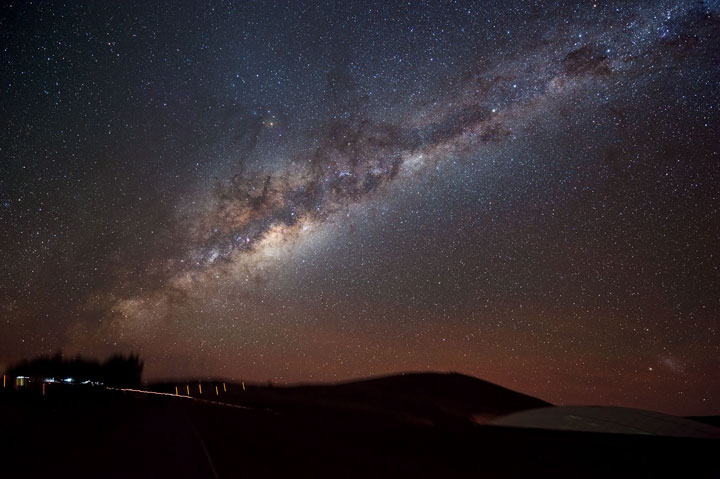TORONTO – With the federal government’s announcement of $243.5 million towards the construction of the Thirty Meter Telescope (TMT) project in Hawaii, astronomers are hoping that it will not only answer questions about our universe, but that Canadians will also reap the benefits.

“Astronomers have to have access to the best resources to stay there in the hierarchy of international astronomy,” said Randy Attwood, executive director of the Royal Astronomical Society of Canada. “I think this sets up Canadian astronomers for quite a while and will probably attract people to Canada to study astronomy and do some research.”
READ MORE: UBC telescope searching for clues to beginning of the universe
One of the country’s largest telescopes is the Canada-France-Hawaii Telescope (CFHT) on Mauna Kea, Hawaii, the site of the planned TMT. But that telescope was built in 1979 and its 3.6 metre size is significantly smaller than most international telescopes.
“A small telescope just cannot see the things that a big telescope can,” said Carlberg. “So we were going to be pushed out of the business if all we had was our little old telescope.”
The telescope is using cutting-edge technology. In particular, something called “adaptive optics.”
The largest telescope on Mauna Kea is the Keck Telescope at 10 metres. Ray Carlberg, a professor in the department of astronomy and astrophysics at the University of Toronto, explained that the TMT — at 30 metres — gathers nine times more light. With the adaptive optics, the light gets concentrated into one-ninth the area. So now that increases the brightness on the camera detector by a factor of 81.
“So now we can see something that is 81 times fainter than the best telescope around right now,” he said.
On top of that, the telescope will allow astronomers to resolve details that are about 10 times smaller than what can be seen today. And this means that astronomers will be able to detect planets that exist around other stars and possibly observe a potentially habitable planet. In fact, this telescope will have better optics than the Hubble Space Telescope.
The TMT will also be used together with the next space telescope, the James Webb Telescope (Canada has contributed instruments to that). That’s because the James Webb sees in infrared. If it sees something that begs more investigation visually, the TMT can turn its eyes to it.
READ MORE: Hubble releases stunning hi-definition ‘Pillars of Creation’
Attwood said that the sheer size and technology of the TMT is amazing.
“The thing that is impressive is not only just the size of the mirror or the mirrors, but the fact that here we are on the 25th anniversary of the Hubble and we’re talking about building a telescope on the ground which will have better resolution than Hubble ever did given adaptive optics and the size and everything,” he said. “So that’s pretty impressive. And it’s nice to see that Canadians are part of that project.”
Aside from delving deep into the cosmos, there’s the economic aspect of the telescope.
The steel enclosure for it will be built by Dynamic Structures Ltd. based in Port Coquitlam, B.C. And that impressive adaptive technology? That’s developed by the National Research Council along with various Canadian companies.
“The importance of research like this is that it keeps the skilled people in Canada, doing these types of projects and the spin-off technology from this kind of project feeds back into the economy many times over,” Attwood said.
“To keep our economy strong, we need to contribute to these kinds of projects,” Attwood said.
Carlberg noted that previous Canadian contributions to telescope projects have resulted in other telescope projects for companies and even in building amusement park rides.
Attwood said that these telescopes are able to provide an important insight into life and the big picture.
“We’ve always been trying to learn new things and we’re curious about who we are. These are the ultimate questions: Where did we come from? What’s our place in the universe? And for Canadian astronomers to be at the forefront of that I think is important.”
Carlberg agreed.
“It helps us dream.”





Comments